Pseudo-spacecraft - an unfulfilled revolution in special operations
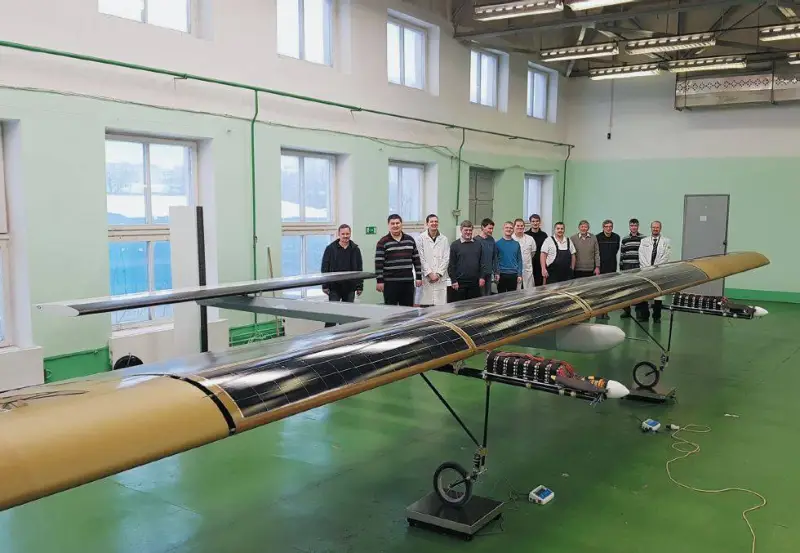
LA-252 "Stork"
High flying birds
Altitudes from 18 to 25 thousand meters are now virtually free. An airplane can climb higher as a record, but this will be a complete exception to the rule. In the 70s, a similar thing was done in the Soviet Union - the record-breaking MiG-25 climbed to 37 meters. According to some classifications, pilot Alexander Fedotov took the plane into near space, the lower limit of which lies at 600 thousand meters.
The authors of this understanding reveal near space as “a space inaccessible to traditional aircraft and spacecraft, at altitudes of 20–100 km.” Currently, among manned aircraft with wings, only the MiG-31 interceptor fighter can reach such near space. According to his passport, his ceiling is close to 22 kilometers. But this is a one-piece machine, and also very expensive.
The development of the stratosphere layer of 18–25 kilometers by unmanned vehicles seems to be profitable. A person, taking into account modern technologies, is superfluous - automation is quite capable of handling it on its own. This league is played by so-called “pseudo-spacecraft”, which differ in a number of features.
First of all, these are unmanned products capable of loitering over the control area for an almost unlimited time. It's all about solar panels - the main sources of electricity on board drones. This makes the devices similar to real space satellites, whose orbit lies several hundred kilometers above the Earth. Pseudospace vehicles are practically invulnerable to ground-based air defense systems due to their prohibitive operating altitude and low effective dispersion area.
Suffice it to recall how many problems a Chinese weather balloon caused when it entered United States airspace a year ago at an altitude of more than 25 kilometers. They tried to shoot down the object several times, but they succeeded only when it dropped below 20 kilometers. The weather balloon had previously passed over the whole of America and allowed itself to be shot down only off the east coast of the country. The pseudo-space drone compares favorably with stratospheric balloons in its ability to maneuver and is much smaller in size.
At altitudes of 18 kilometers or more, it is very difficult to suppress devices with electronic warfare systems. Rather, it is impossible. And the stratospheric drone itself can do a lot of useful work.
Although the devices are usually quite light and have serious limitations on payload, they carry synthetic aperture radars, optical-electronic systems with infrared and hyperspectral imaging, and much more. In some cases, the technology allows surface photography with a resolution of 15–20 centimeters. Pseudo-space complexes are very good as repeaters, for example, for manned aviation, which works directly on the battlefield. Not to mention a communications system similar to Starlink.
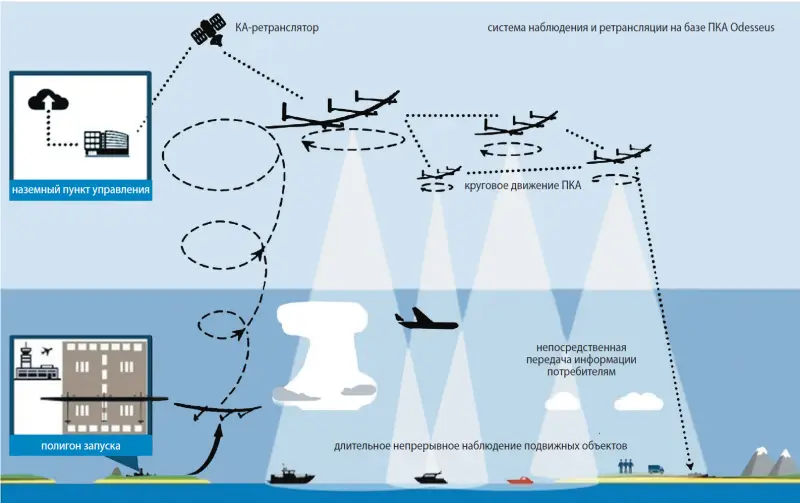
Observation and relay system based on the Odesseus pseudo-spacecraft
In turn, classical satellites are noticeably inferior to stratospheric ones drones in the promptness of information delivery. Operators on the ground have to wait up to several days for a spacecraft to fly over a given area. In the best case, the wait is reduced to several hours, but this requires a significant increase in the constellation of satellites. Which, of course, dramatically increases the cost of the entire project.
Drones from “pseudo-space” are not without their drawbacks.
Firstly, the technology for lifting ultralight aircraft to altitudes of more than 18 kilometers has not yet been fully mastered. These are quite specific products with an extremely large wing area on which solar panels are placed. Alternatively, a hydrogen energy source can be used.
Secondly, difficulties arise at an altitude of about 15 thousand meters - the prevailing turbulence here can seriously damage a fragile drone. However, with a sufficient level of meteorological reconnaissance, this is a completely solvable problem.
Who is first?
Attempts by foreign companies to create stratospheric drones for military purposes look alarming. As stated in the material “Paradigm change: the creation and use of pseudo-spacecraft as an integral part of the “new space revolution” and the “new unmanned revolution” by candidate of technical sciences N. N. Klimenko (NPO Lavochkina), in the West at least 20 companies are engaged in the development of ultra-high-altitude machines on solar batteries. More than 170 thousand patents have been registered in this area.
You don’t have to look far for examples - the most popular drones are Zephyr, Astigan, Phasa 35, Skydweller, Odysseus, Sunglider, Morning Star, Rainbow, Pathfinder Plus, Helios and many others. The typical and most advanced stratospheric drone at the moment can be called the Airbus Zephyr S. It has several records - for example, two years ago it stayed above the Sonoran Desert in the USA for 42 days at an altitude of about 21 kilometers. The device weighs 75 kg, while carrying 25 kg. The list of equipment includes the most advanced reconnaissance equipment, allowing you to control a square of 20 by 30 kilometers on Earth.
The simplest mathematical calculations show that for total control of the entire territory of Ukraine, about a thousand Zephyr analogues will be required. Total, that is, redundant - not a single information system will be able to digest such a volume of information from drones. This is not required. Much more important is the presence of several dozen stratospheric drones above the front line and at the strategic depth of defense.
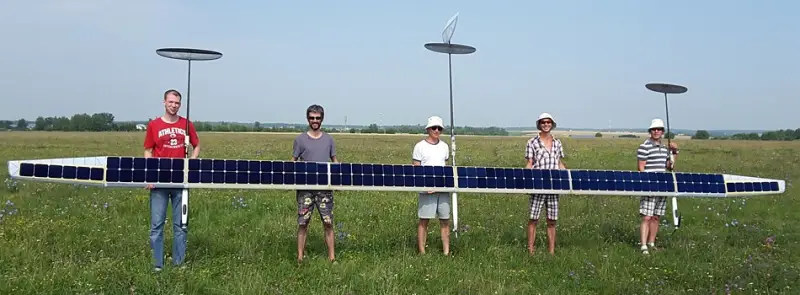
The team behind the Owl with the first drone prototype
Russia is noticeably lagging behind in the development of pseudo-spacecraft, but there are still some advances. We are talking about the Owl project from the Foundation for Advanced Research and the Tiber company.
The stratospheric drone made its first flight in 2016. It is impossible to call him a truly pseudo-space reconnaissance officer. The device rose only 9 kilometers and stayed in the air for 50 hours. Quite a worthy result, but this was the only high-altitude flight of the Owl. More precisely, not even a full-fledged “Owl”, but a 1:3 scale model of it.
In the best traditions, the aircraft has a large wing aspect ratio and a multi-fuselage layout. As the developers write, “low weight was achieved as a result of installing synchronized autopilots on all fuselages within the framework of a distributed control system, and to maintain a given deflection of the entire wing, the automatic control system changes the angle of attack and, as a result, the lift force on the required section of the wing.”
The website of the development company contains information about the second prototype with a wingspan of more than 28 meters. This device has already climbed 19 kilometers, which is quite competitive. Only the Owl project was closed in September 2017, and nothing is known about its further fate.
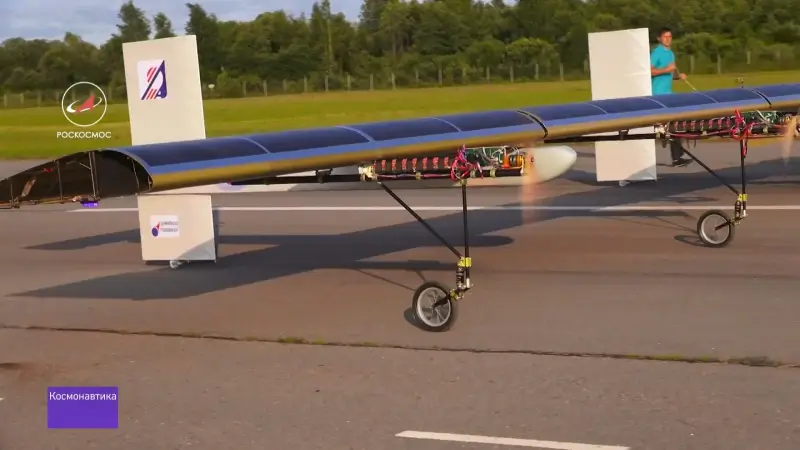
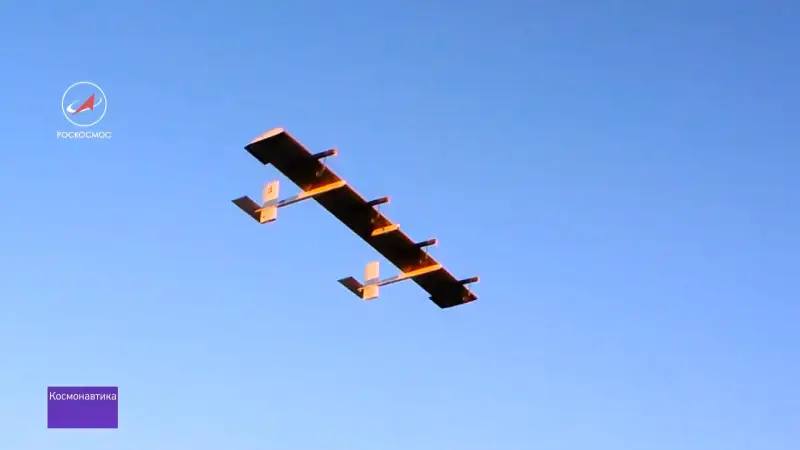
The “Stork” project at NPO Lavochkin was closed or put on a long pause
The fate of two experimental stratospheric drones “Aist” from NPO Lavochkin is also unknown. The prototypes are called LA-251 and LA-252 and use a rigid flat wing, unlike the Owl. The take-off weight of the aircraft is about 120 kilograms with a payload of 25 kilograms. The estimated ceiling is 18 kilometers.
In theory, everything is fine with the machine, but the domestic industry is not capable of producing the required lithium-sulfur batteries with a specific energy output of 400–600 Wh/kg. Available lithium-ion ones do not provide the required flight duration and altitude. Since 2017, nothing has been heard about the development of the Stork project - most likely, it is simply frozen, if not closed forever.
This is a typical example of missed opportunities.
The design school and competence of the developers made it possible to put several models of domestic stratospheric reconnaissance aircraft on the wing. Before the start of the SVO, this was at least five years old. But for inexplicable reasons, the topics of pseudo-spacecraft were closed. The stratospheric revolution in the skies of Ukraine performed by the Russian Army is cancelled.
All that remains is to wait for the enemy to send his devices, against which we have no countermeasures, for testing in combat conditions.
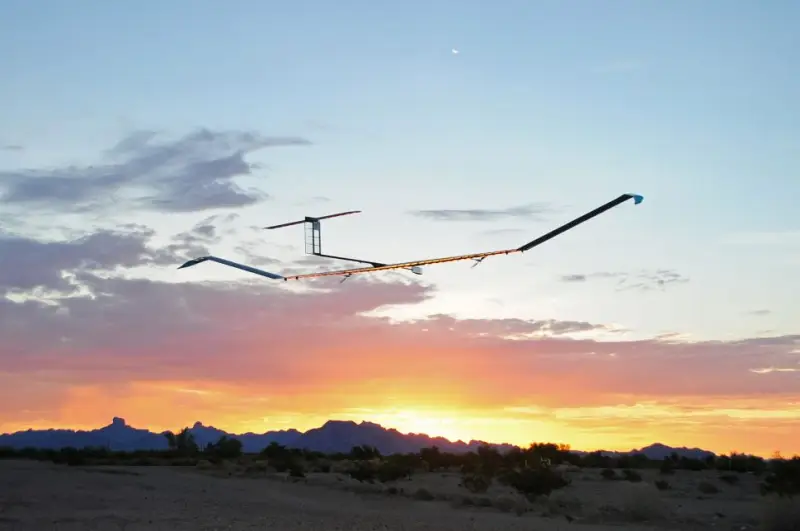
Information